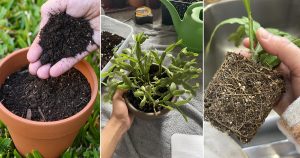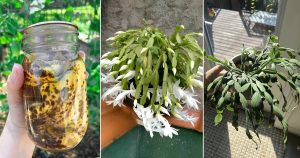Do you try fertilizing your String of Pearls, but always end up with root rot? Learn the safest and most effective ways to do it!
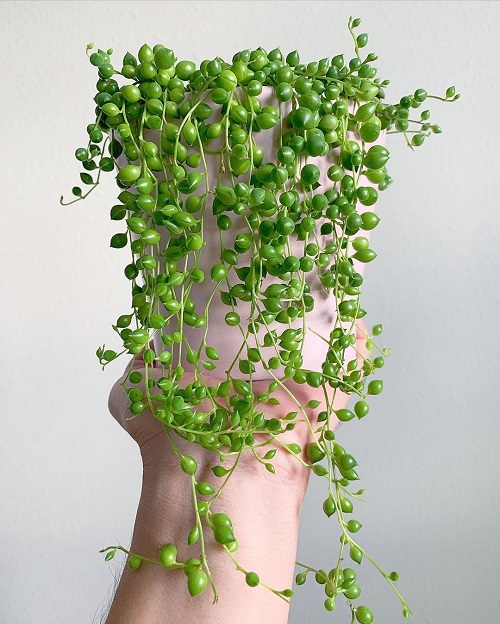
String of Pearls loves rich, sandy soil, but in pots, it depends entirely on you for food. Without a boost, it weakens, grows slowly, and loses that lush, pearl-like charm. A little fertilizer makes the vines fuller, roots stronger, and leaves shinier. But here’s the catch—it’s a succulent, so too much food is a one-way ticket to root rot.
Necessity of Fertilizing
String of Pearls loves rich, sandy soil, but when it is grown indoors or in containers, it relies on its caretaker for its entire nutrition.
Fertilization becomes necessary, especially when the soil is older or depleted. A well-fertilized String of Pearls grows faster, develops stronger roots, and produces healthier and vibrant leaves. But, it is important to note that since it is a succulent, it’s more vulnerable to overfeeding and root rot if not fertilized with care.
Best Type of Fertilizer for String of Pearls
1. Balanced Liquid Fertilizers
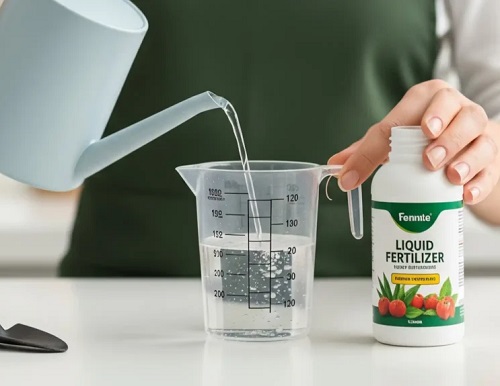
Finding the right type of fertilizer can be tricky. Since String of Pearls is a sensitive plant, a liquid fertilizer with an NPK ratio of 5-10-5 or 10-10-10 diluted to half or even quarter strength is ideal.
It mixes evenly with water, reducing the likelihood of salt buildup in the soil, which is harmful to your green buddies. This method also ensures that nutrients are absorbed gradually with watering.
2. Succulent Specific Formulas
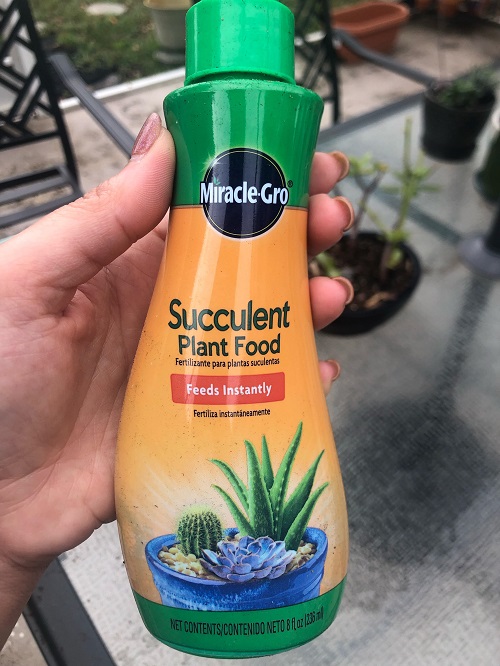
If you are having trouble getting your hands on a fertilizer with the specific NPK ratio, simply opt for a succulent-friendly alternative instead. But remember to only use it once a month during the growing season – spring and summer.
These are often lower in nitrogen, which reduces the risk of leggy growth and helps to maintain the pearl-like shape of the leaves.
3. Controlled-Release Fertilizers
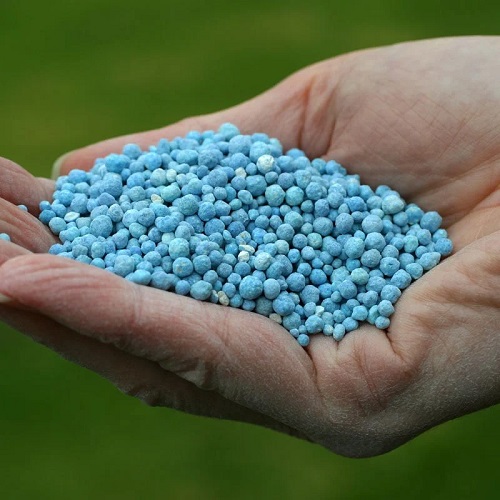
Can fertilizers be in the shape of tiny beads? Yes! Slow-release granule fertilizers, which look like tiny seeds, can be applied at the beginning of spring to provide gentle, consistent nourishment through the colder months. These are helpful for forgetful gardeners who miss out on monthly feedings.
4. Organic Alternatives
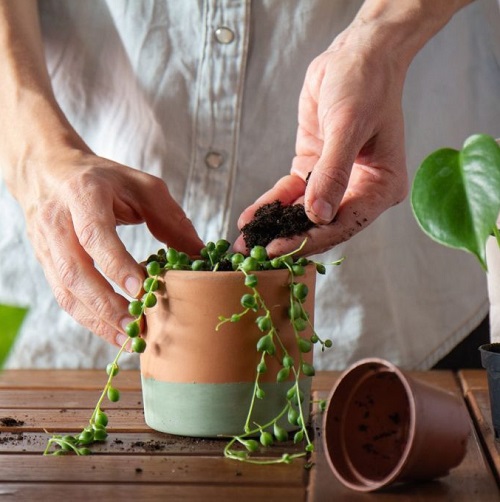
Why spend cash on industrial fertilizers when a natural alternative lies in your kitchen trash can! Organic fertilizers can improve soil health, productivity, and profitability.
Compost tea or diluted coffee-ground water (soaked for 1-2 weeks) can offer a more natural approach. But note, coffee grounds are acidic and should never be applied directly to the soil. Always dilute and mix properly to avoid burning roots.
How Often to Fertilize
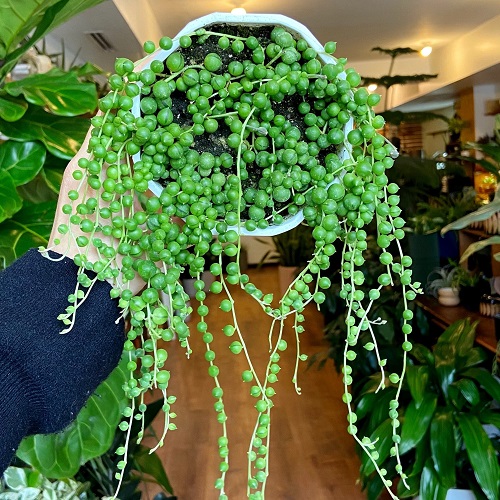
The right fertilization time plays a crucial role in keeping your succulent healthy. You can’t do it too early or too late and hence must thread the needle. However, if you choose to do it year-round or to boost growth in different seasons, the following are the best ways.
1. Spring and Summer
Feed once every 2 to 4 weeks using a diluted liquid fertilizer or once monthly with a slow-release fertilizer.
2. Autumn
Gradually reduce feeding as growth slows.
3. Winter (Dormancy)
Suspend feeding altogether unless you’re using a controlled-release option applied once at the season’s start.
The Root Rot Risk
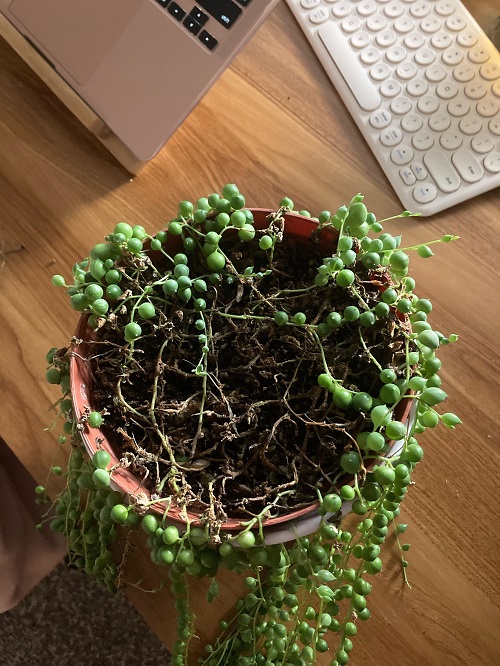
Root rot is the biggest silent killer for String of Pearls, especially when fertilized improperly. But worry not, with knowledge and practical know-how, you can keep your plant safe.
1. Use the Right Kind of Substrate
Firstly, root rot begins with the wrong type of potting mix. Always use well-draining soil like cactus and succulent mixes, which are considered the best. They allow air flow and easy seepage of excess water. You can even enhance the mix with perlite or pumice for better drainage.
2. Prep the Soil
Prepping is the way to a successful fertilization session and, therefore, a healthy plant! Always fertilize on damp soil and never on dry soil because it can burn the roots. Water your plant lightly first and then add diluted fertilizer.
3. Pay Attention to the Pot
Drainage holes are non-negotiable. Terracotta works best—it “breathes,” keeps roots cool, and wicks away moisture.
4. Less is More
It is always better to underdo than overdo in the case of fertilizing your string of pearls. Dilute more than you usually do because with succulents, less is more. A half-strength dose is often sufficient, and a quarter-strength mix is a safer alternative.
Signs of Overfertilization and Root Rot
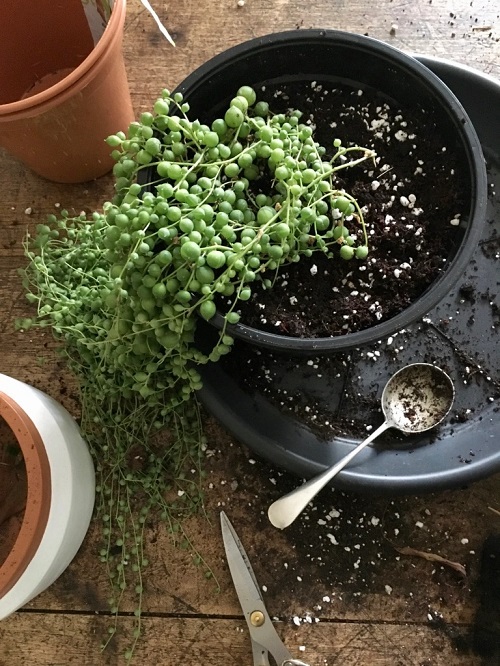
Watch for these signs, they might denote over-fertilization and root rot:
- Yellowing or translucent beads
- Mushy stems or leaves
- White crusts on the soil surface
- Foul smell from the soil
- Rapid leaf drop or thinning of vines
If you notice these signs, you will need to leach out your soil. Pour clean water on the soil to remove excess salts and allow the soil to dry out completely. Repot in fresh soil if the rot is extensive.
Fertilizing your String of Pearls is not difficult or overwhelming. With the right knowledge and practice, you can boost its growth and appearance without compromising its health. Remember the thumb rule: well-draining soil, diluted fertilizer, strict seasonal schedule, avoid overfeeding, and always check the moisture levels.
Want your String of Pearls to thrive like a pro? Just feed them gently, water mindfully, and see their natural growth. How are you doing it next?

